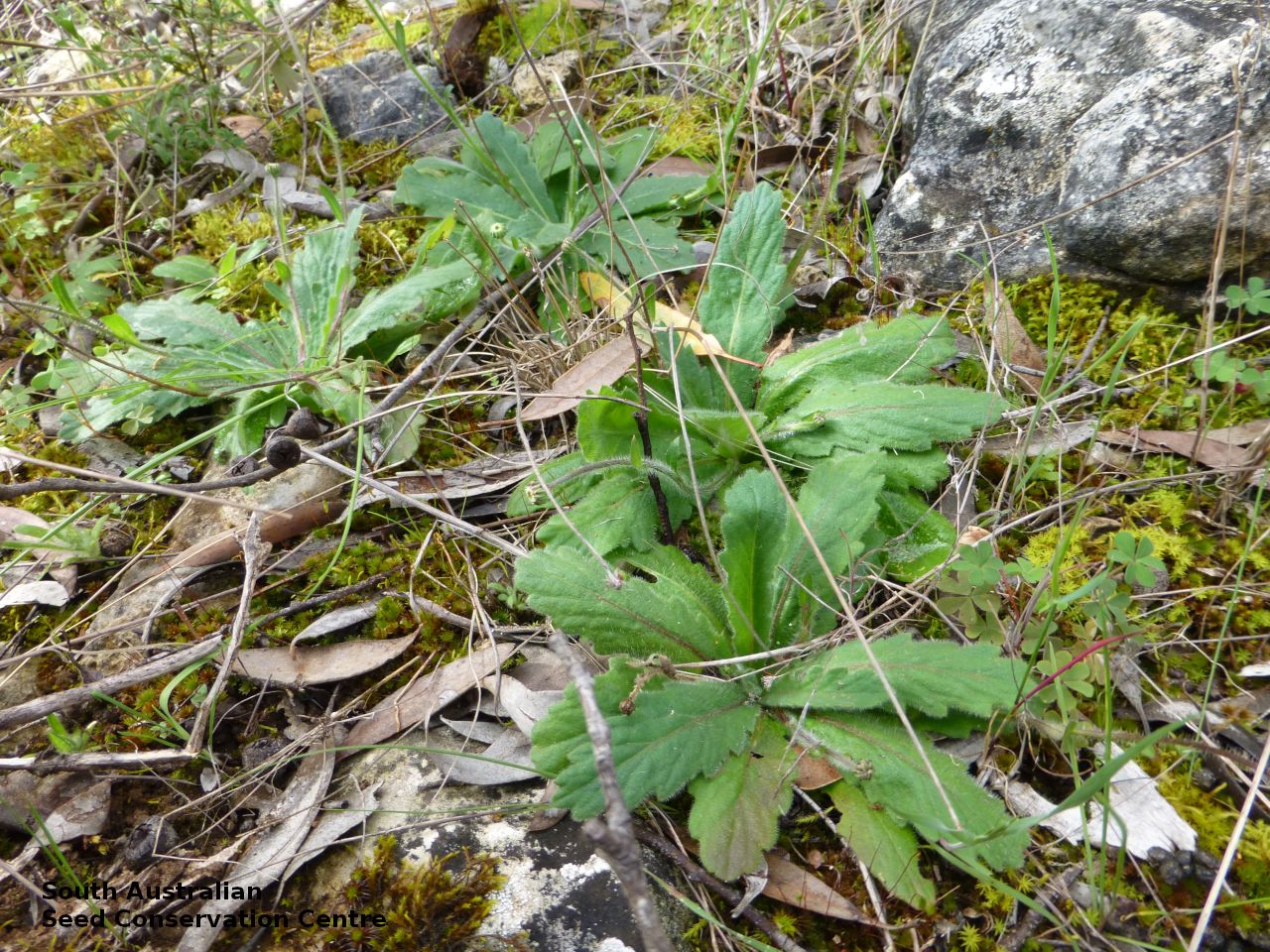

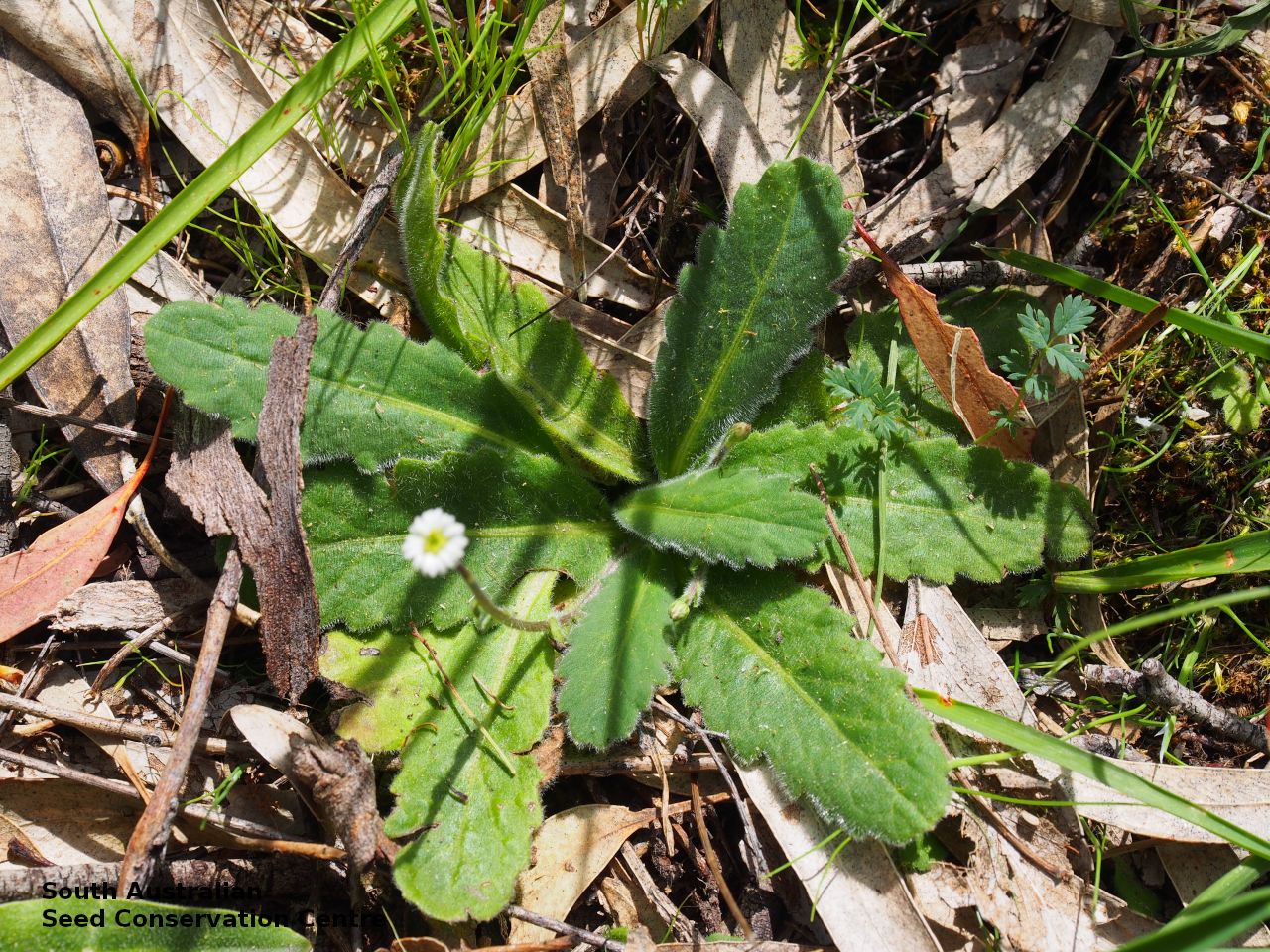
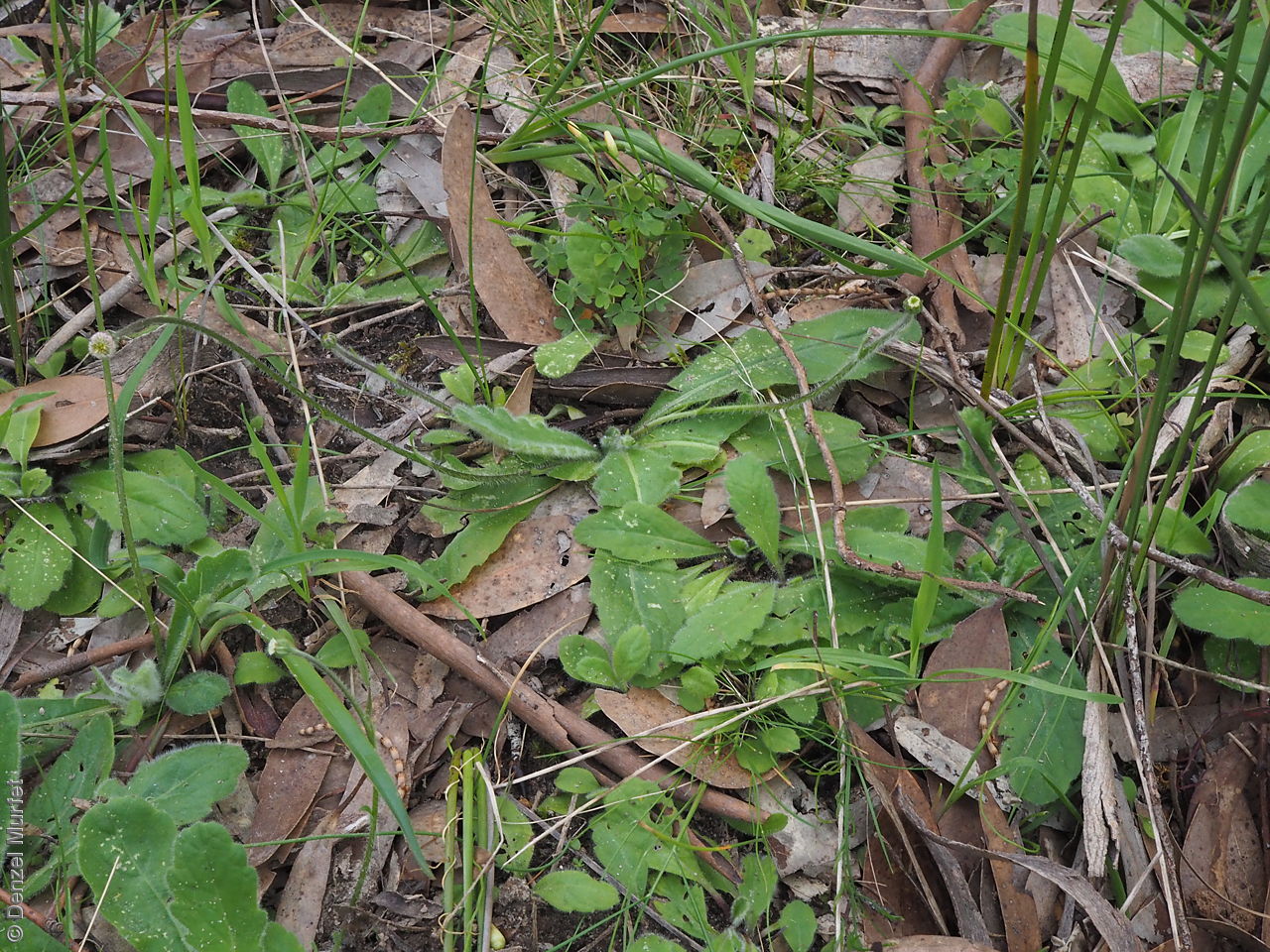
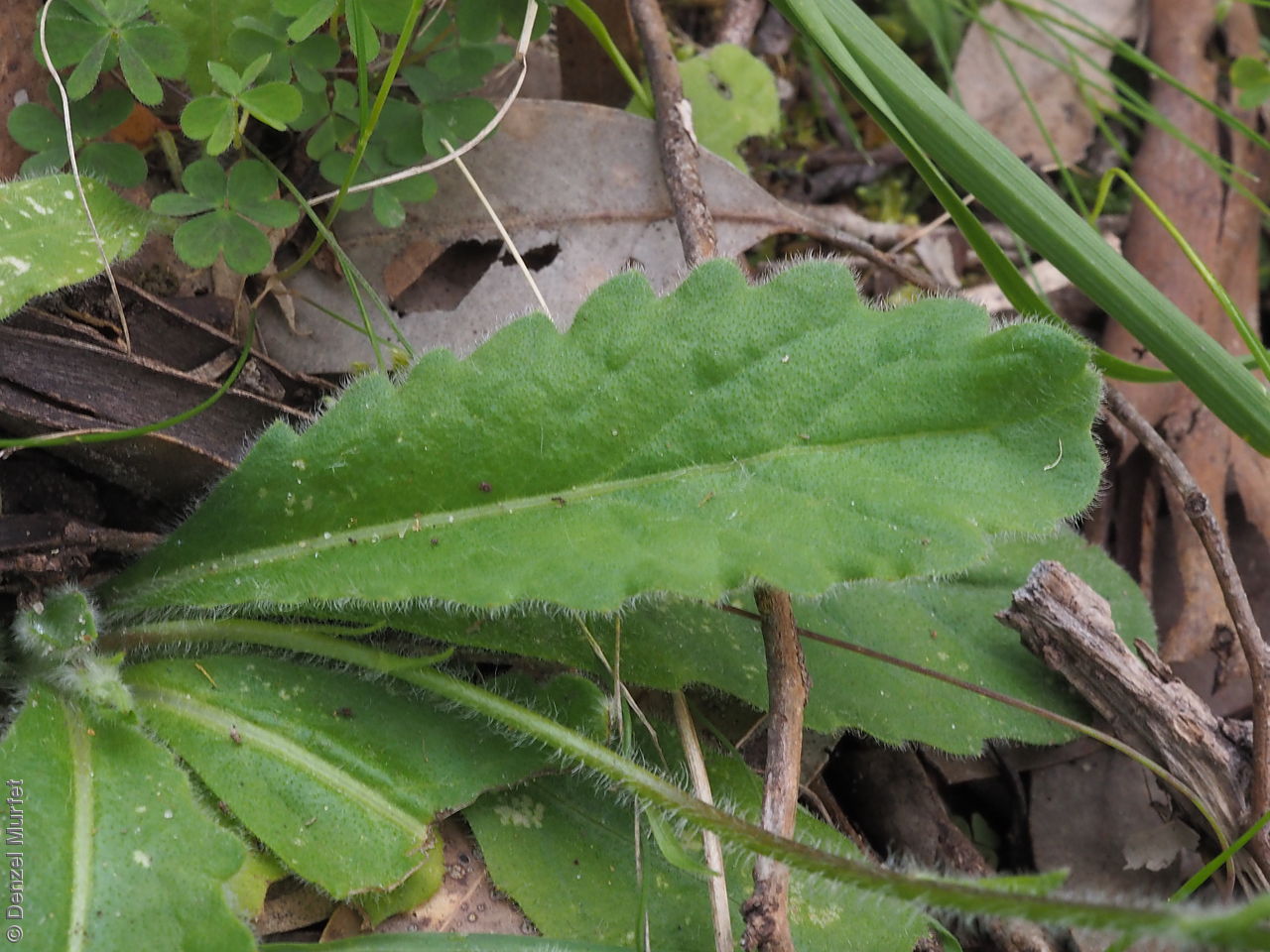
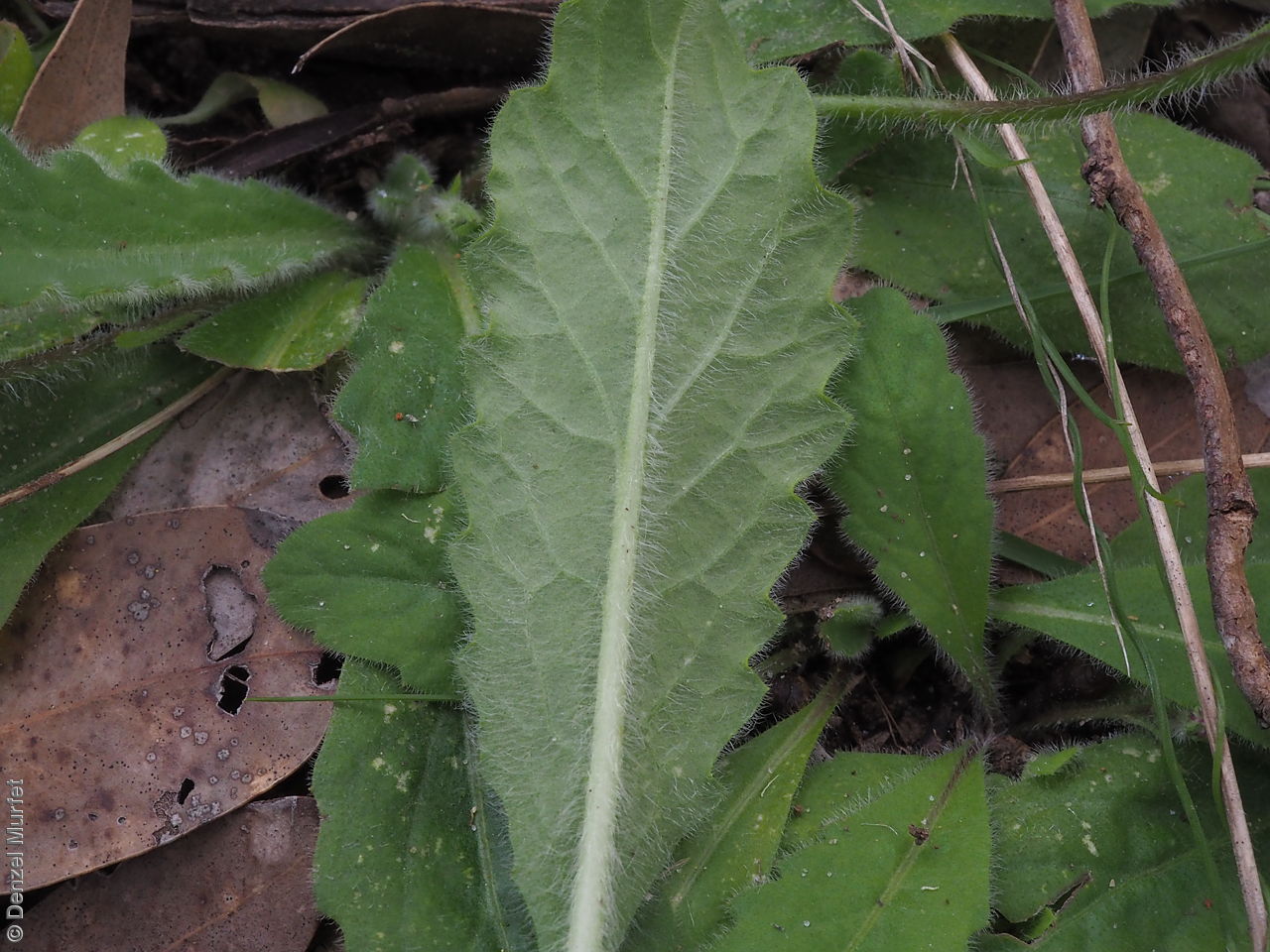
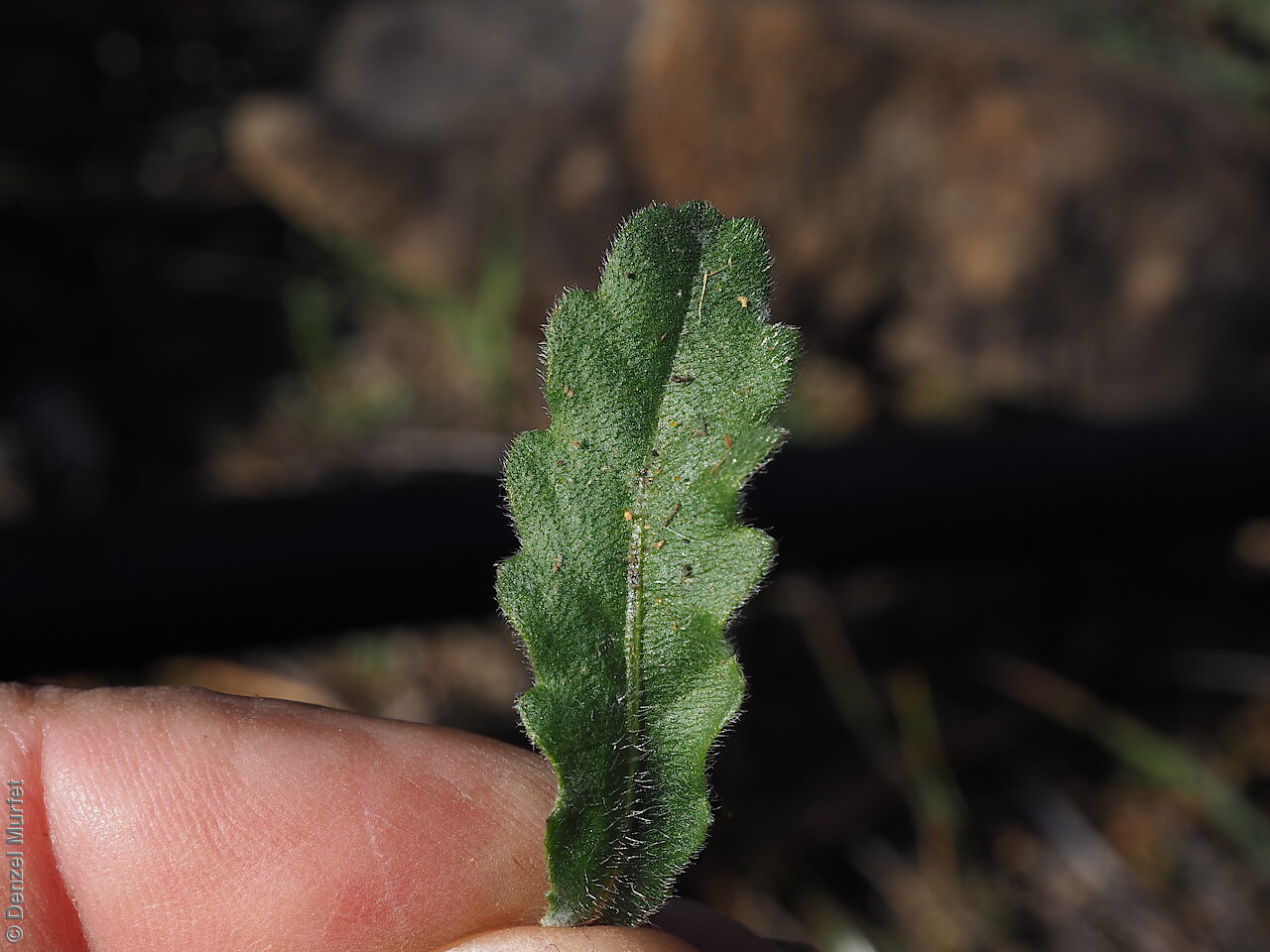
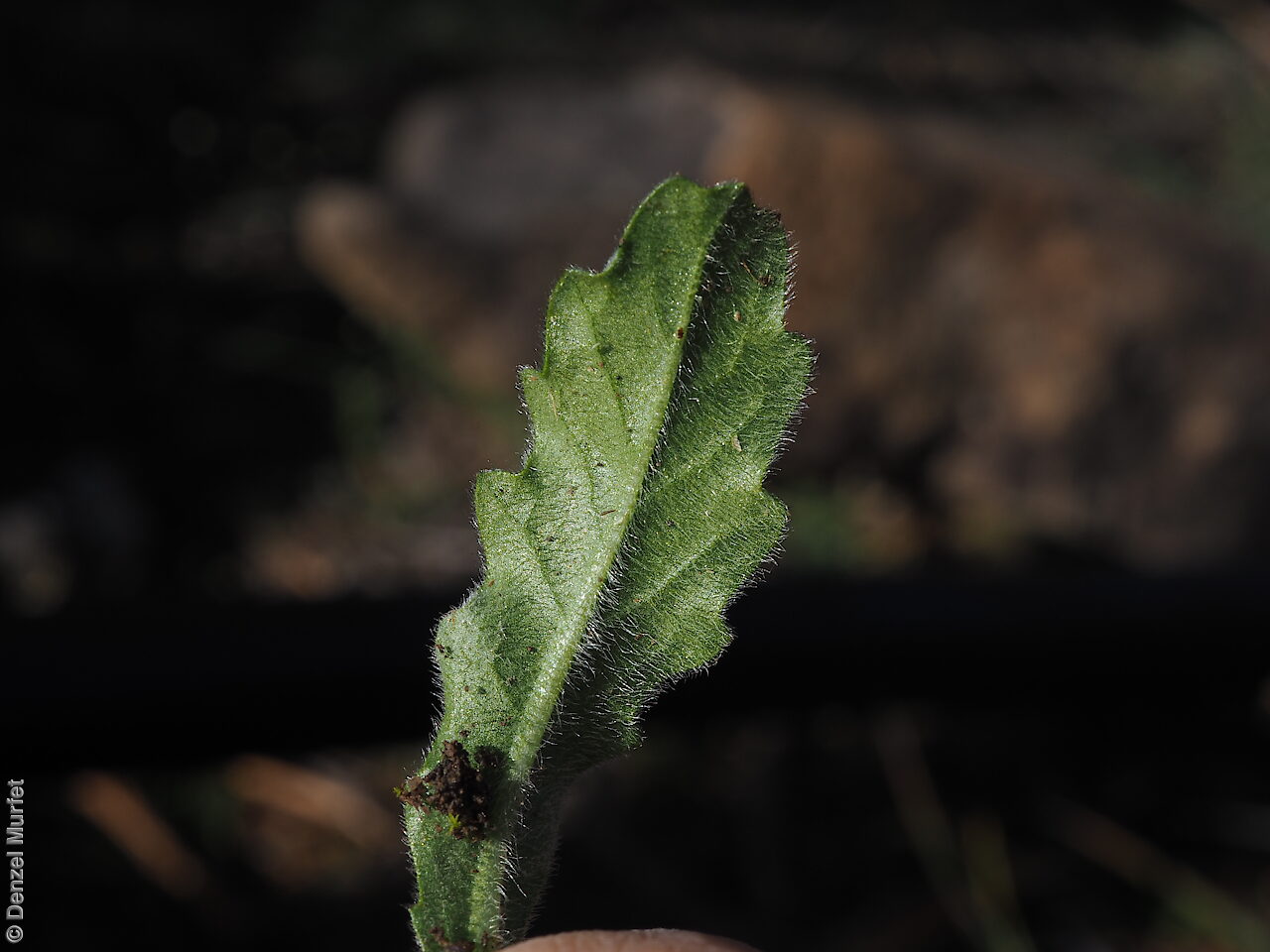
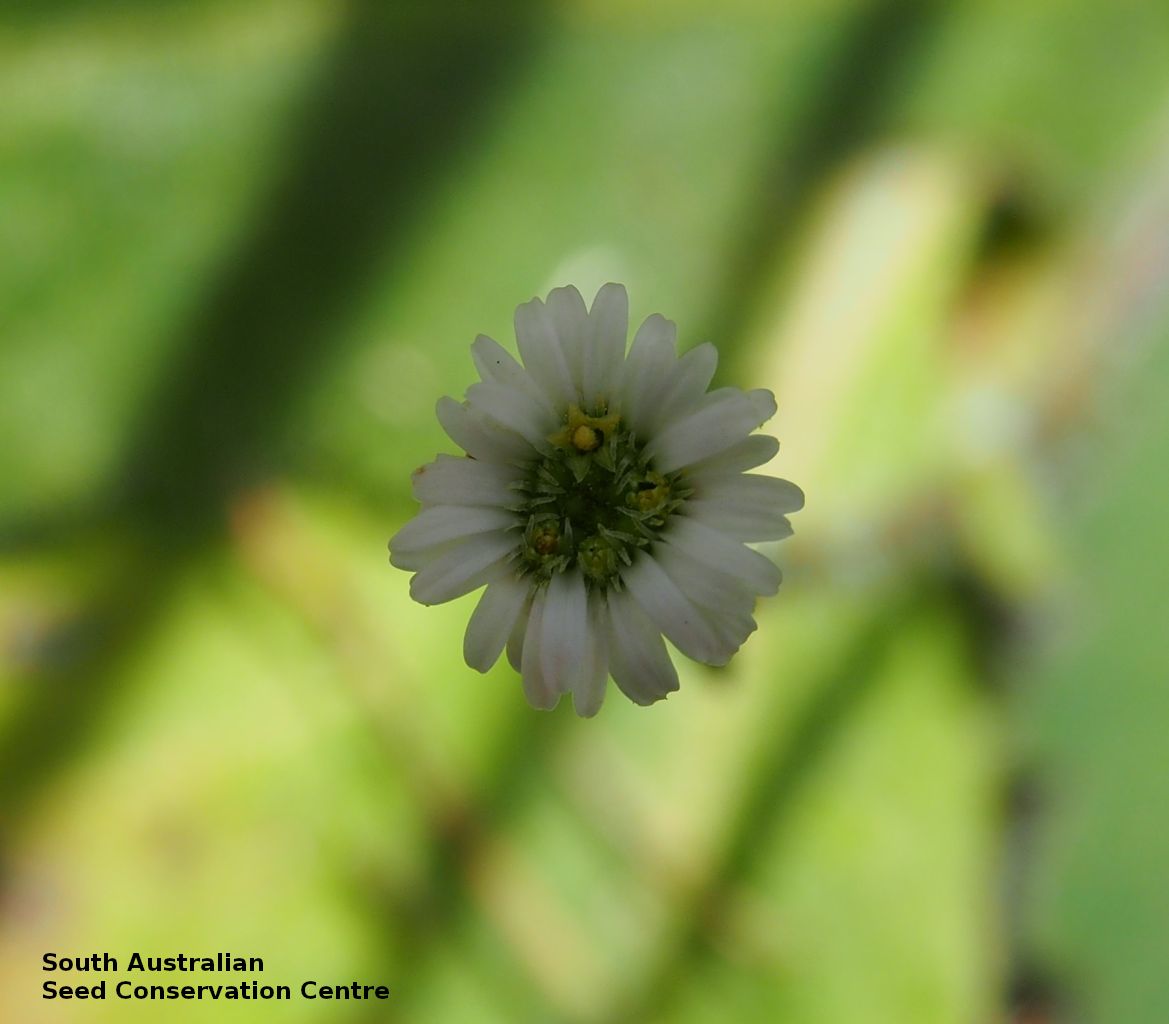
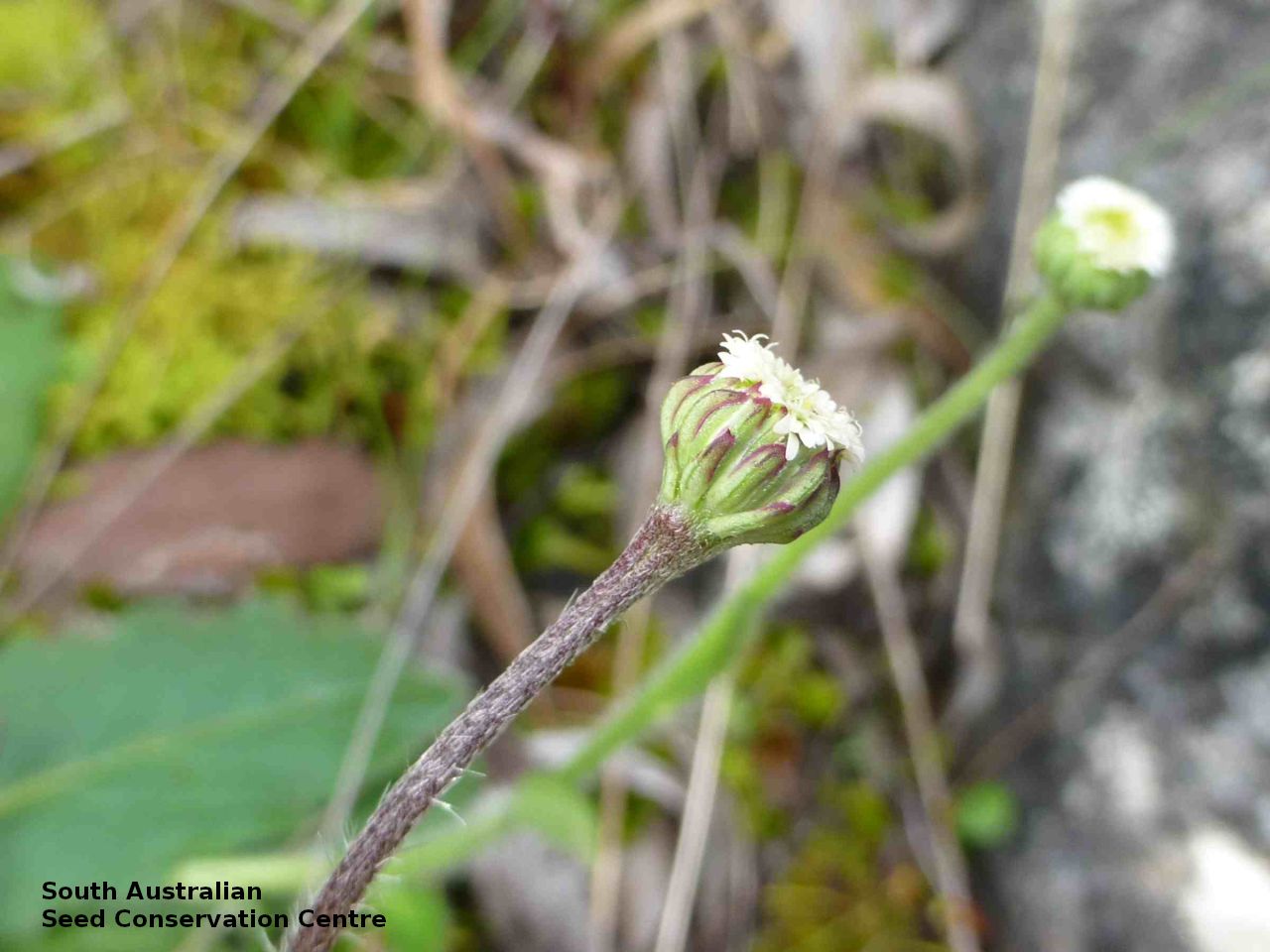
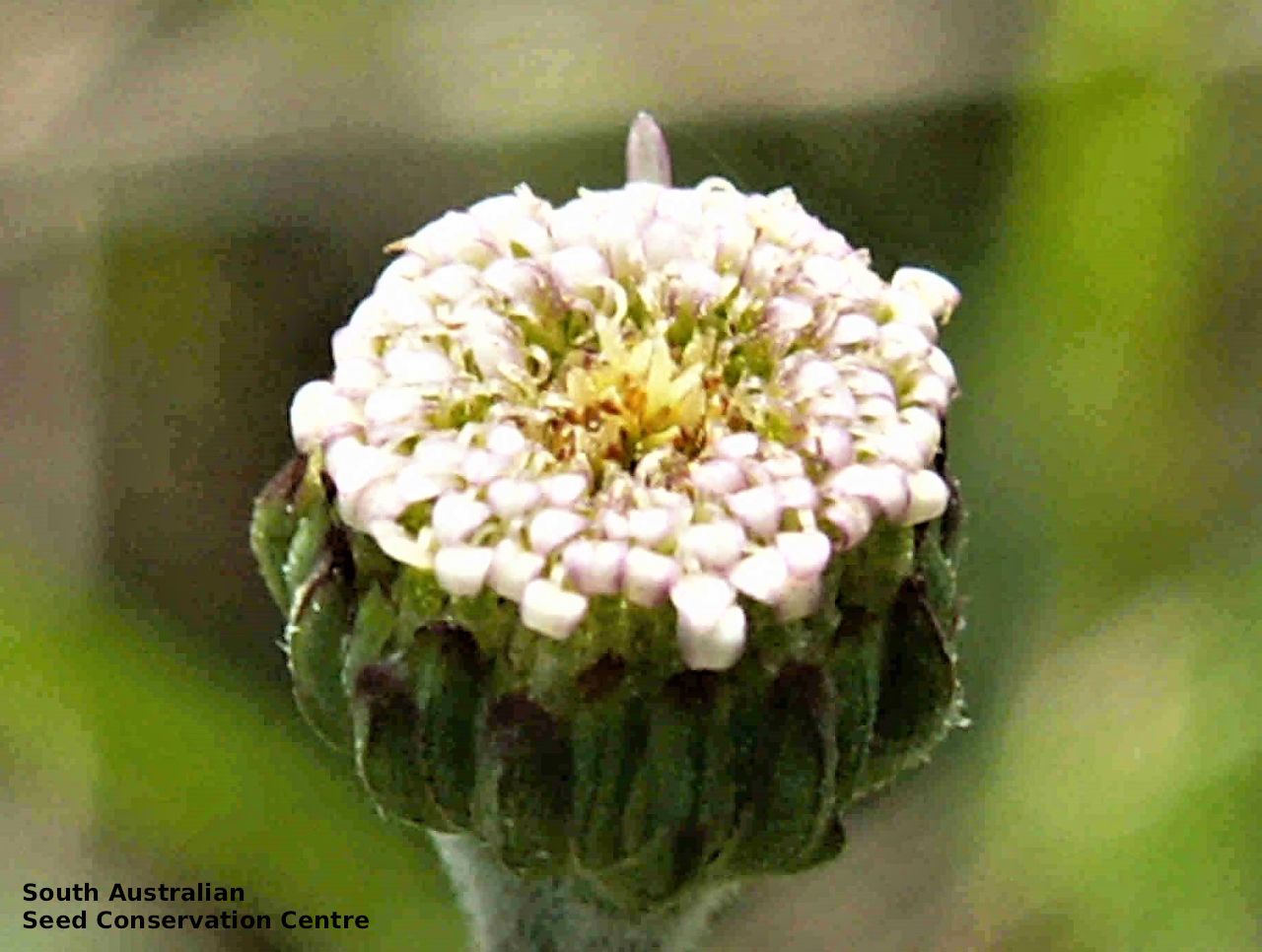
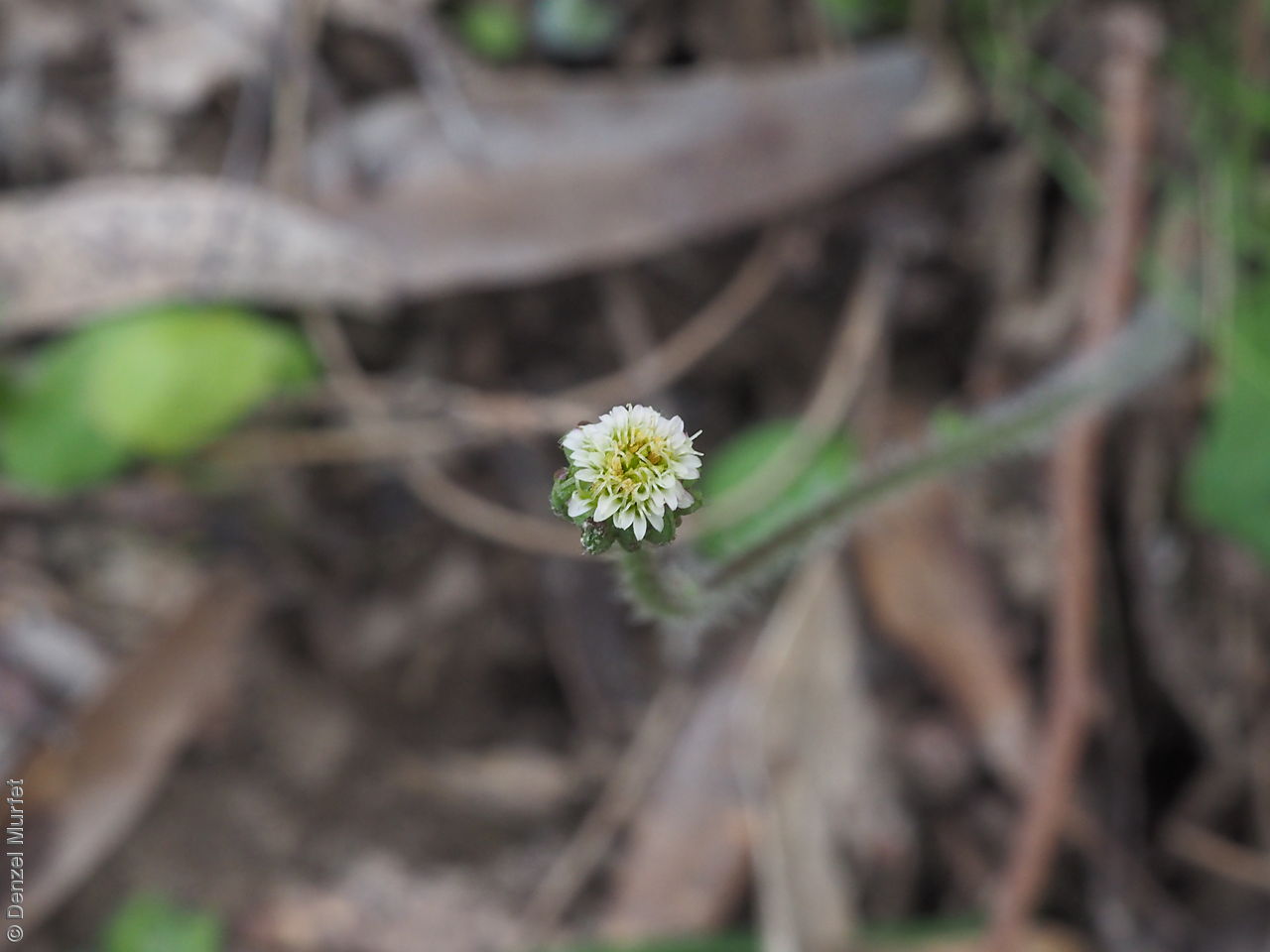
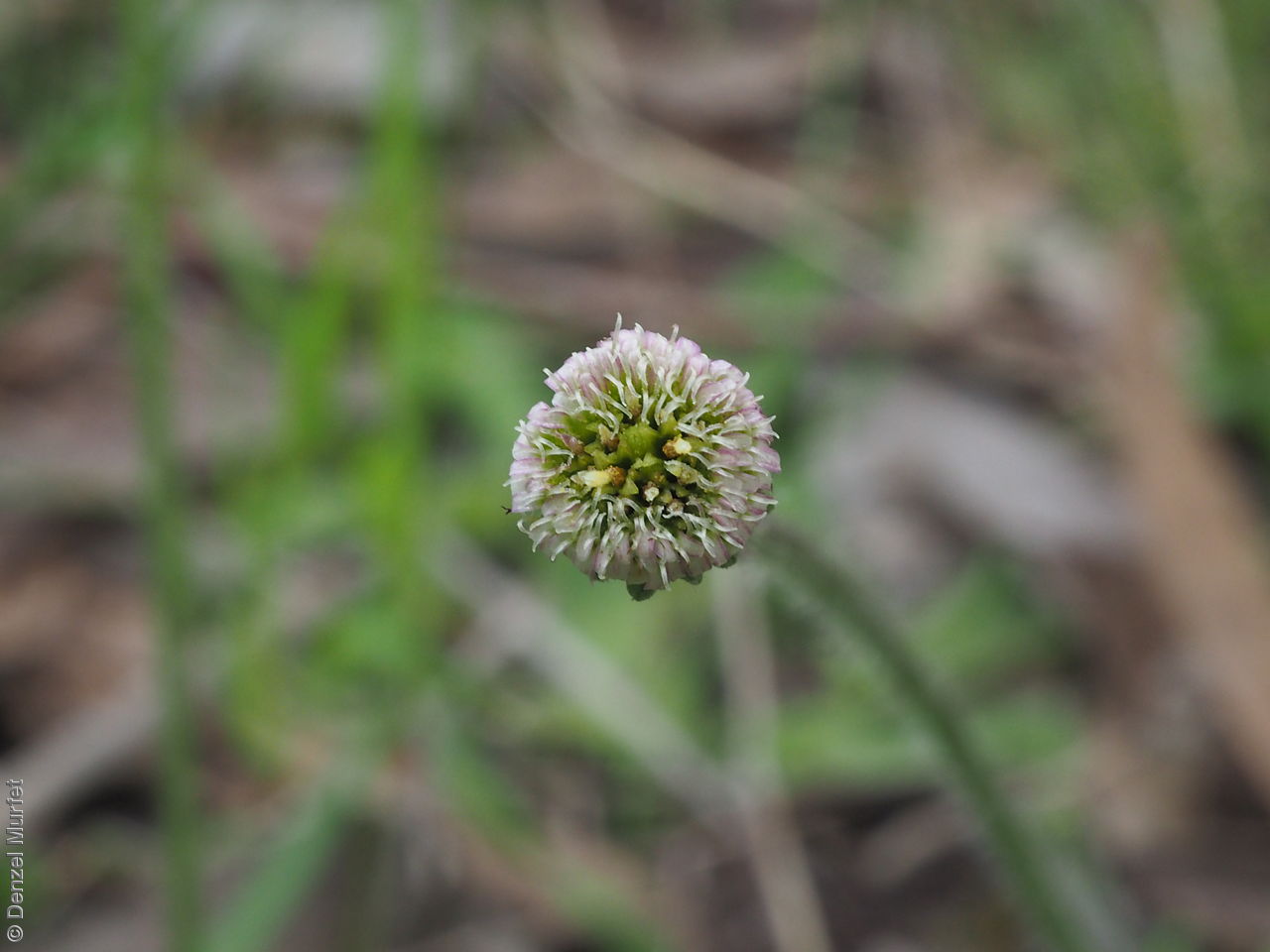
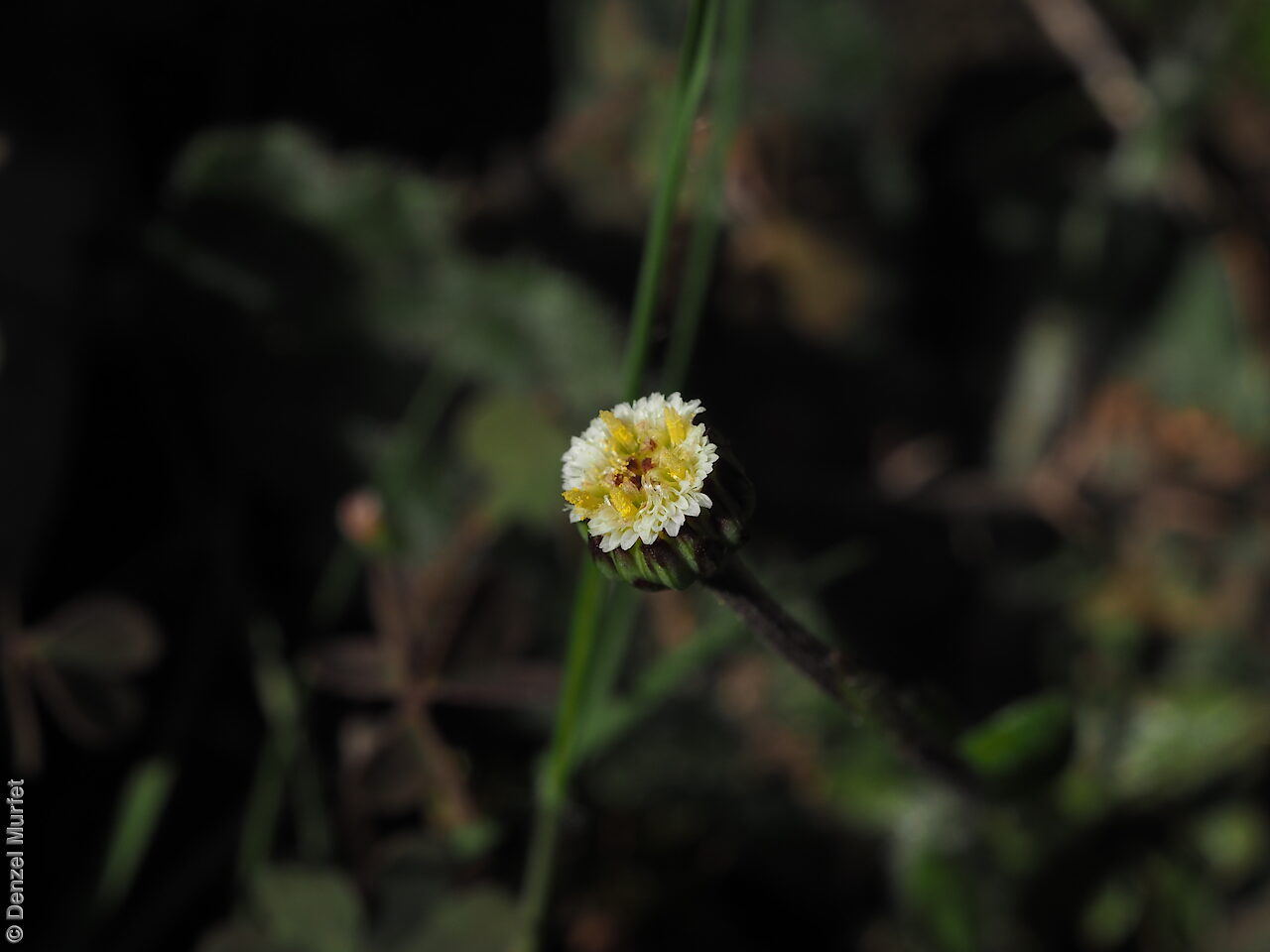
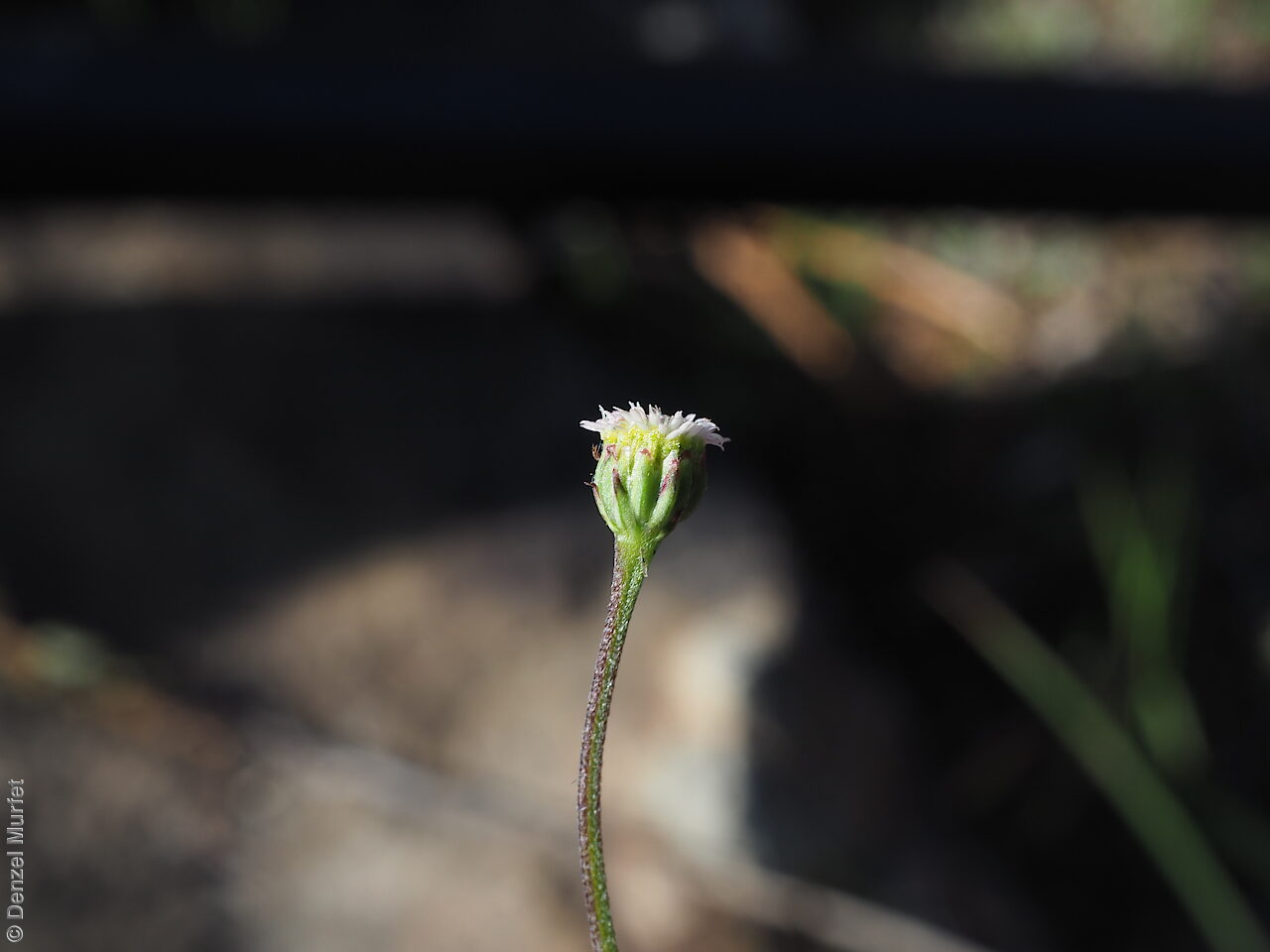
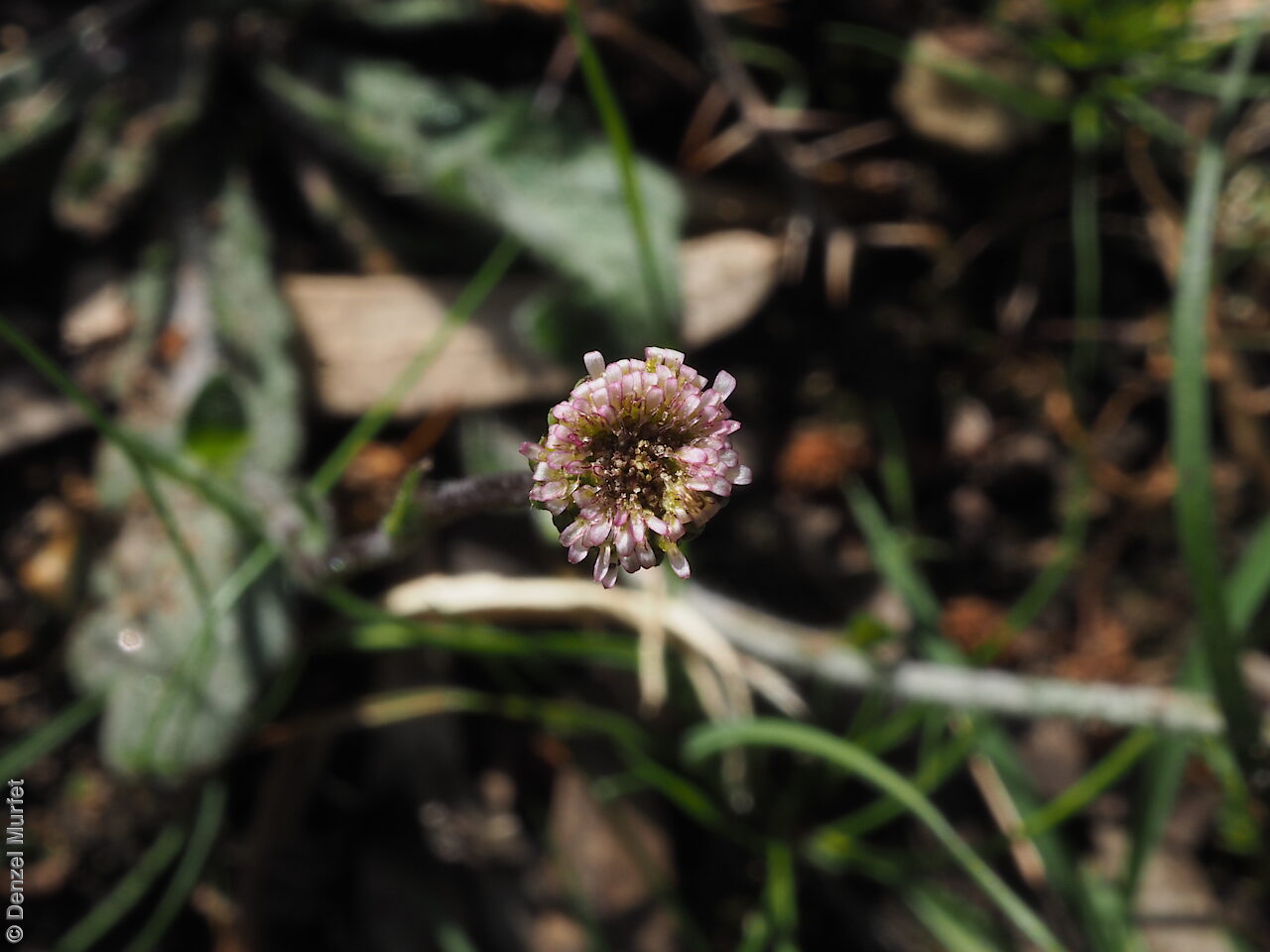
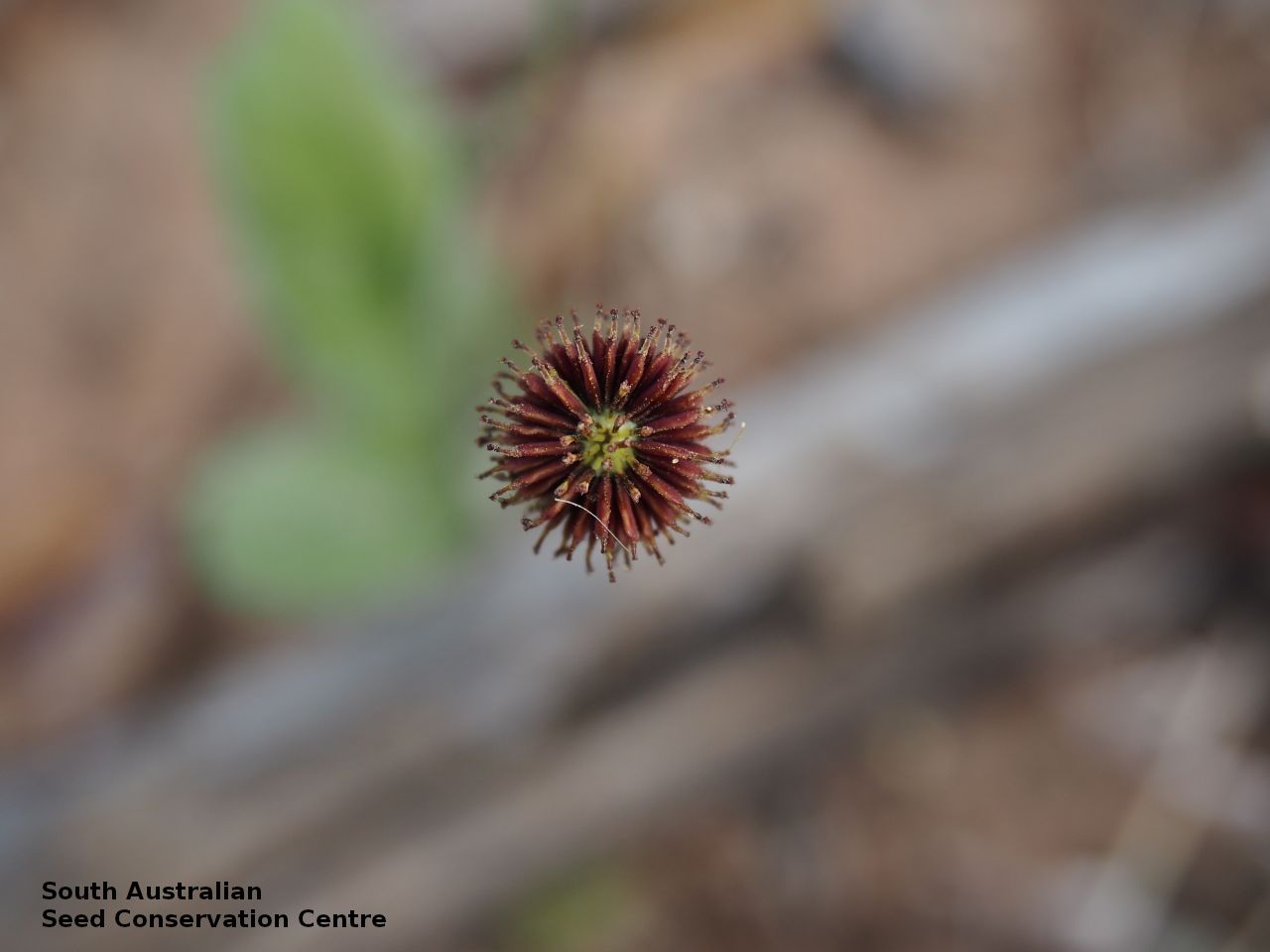
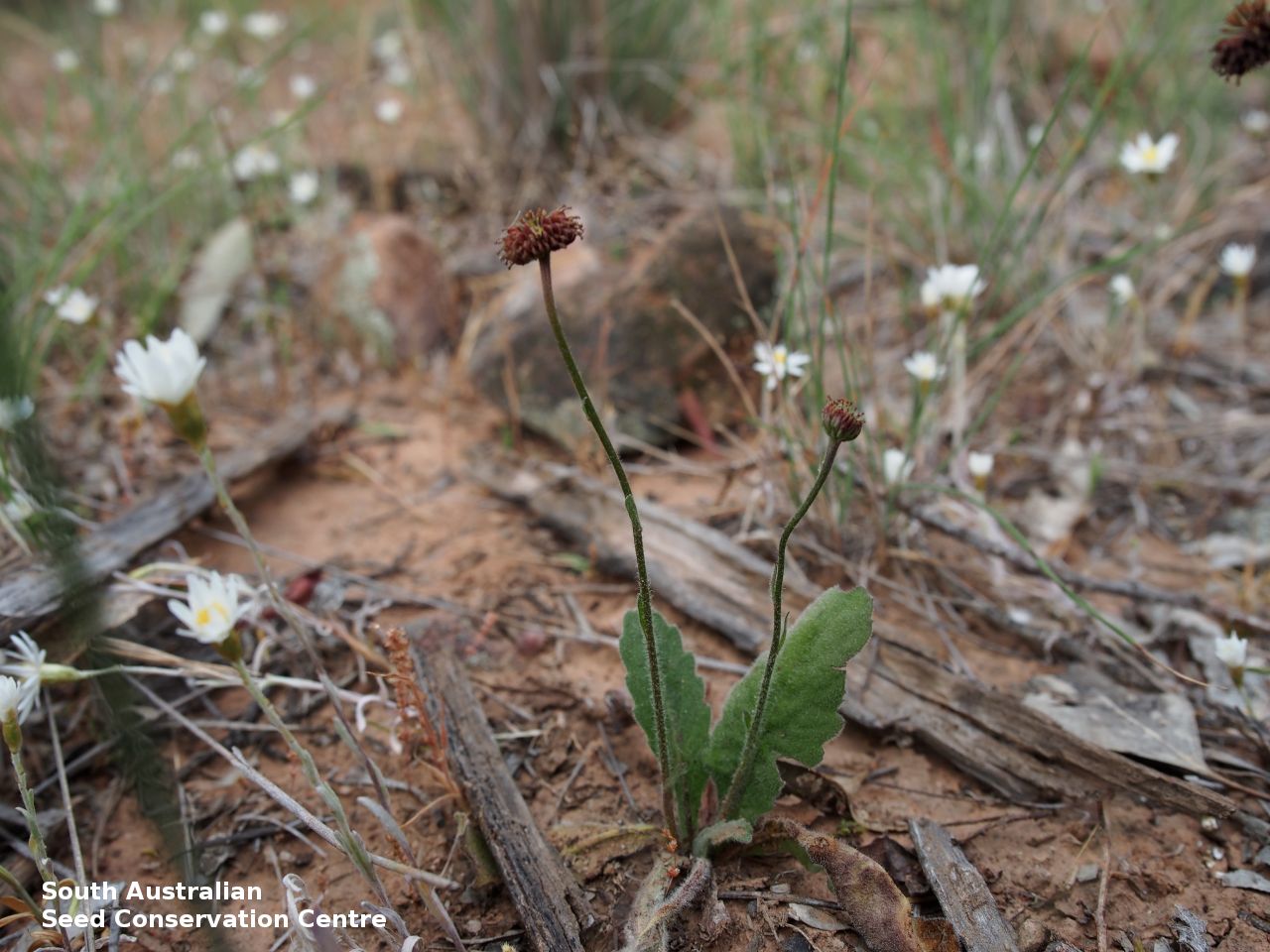
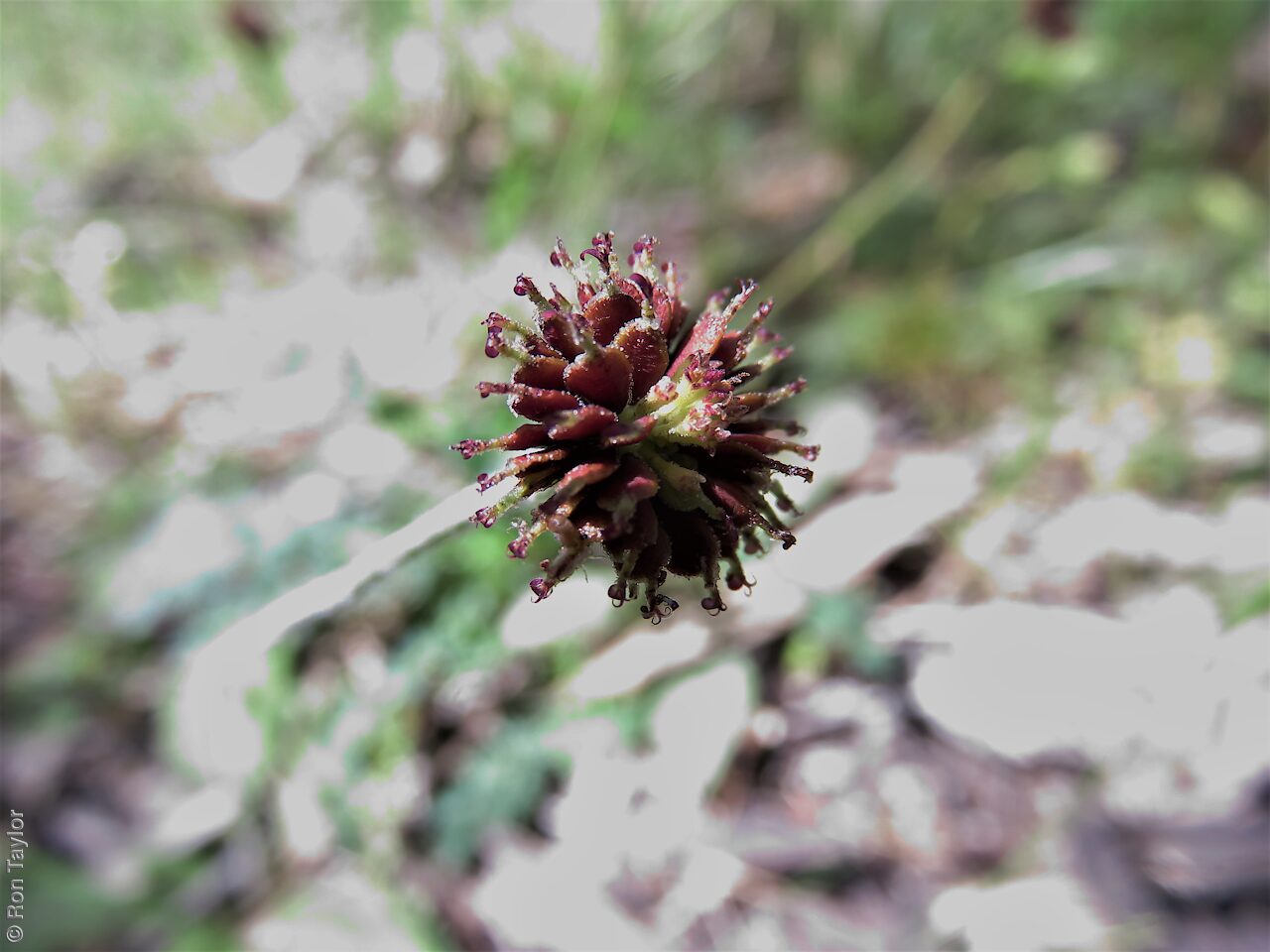
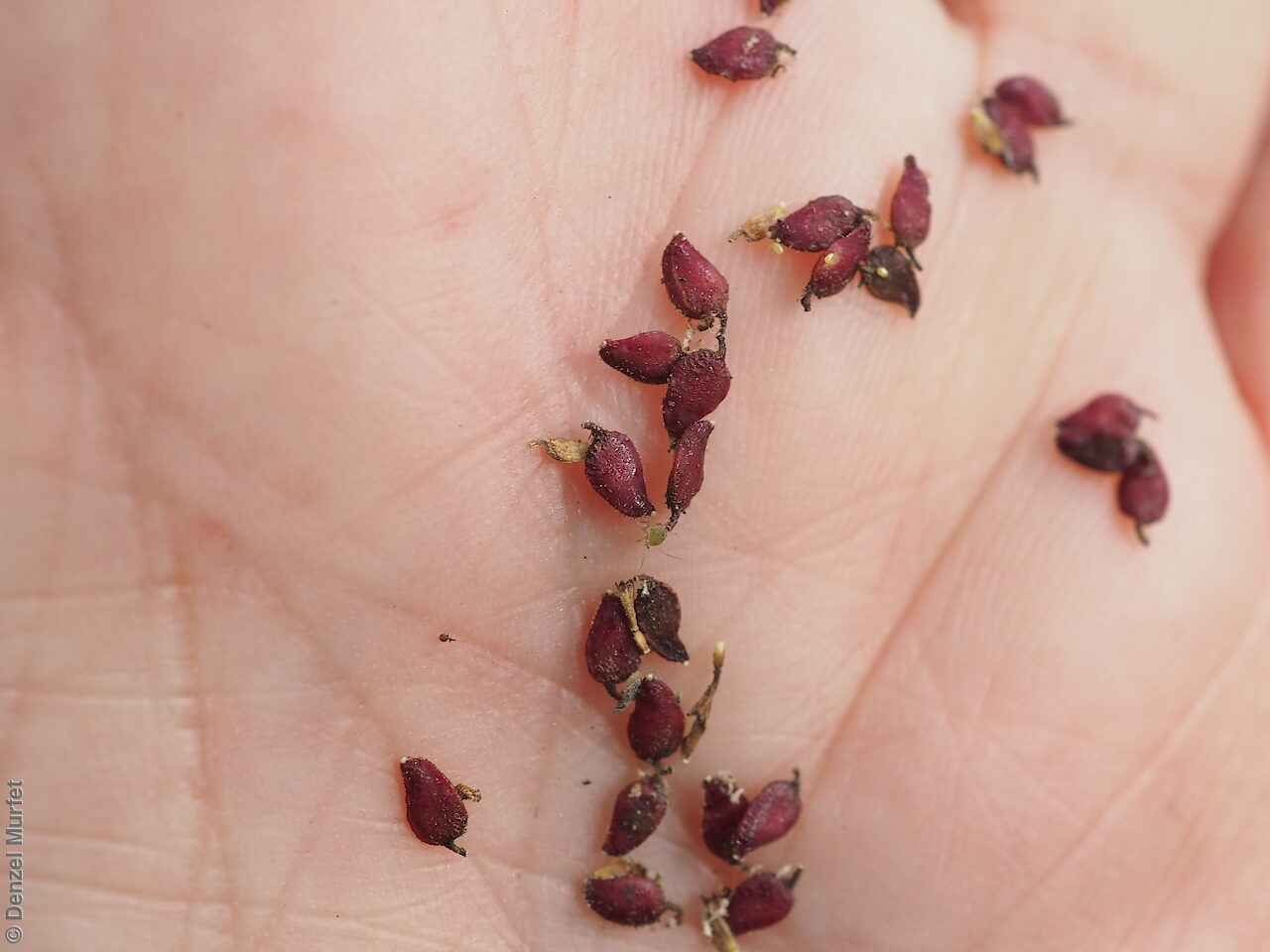
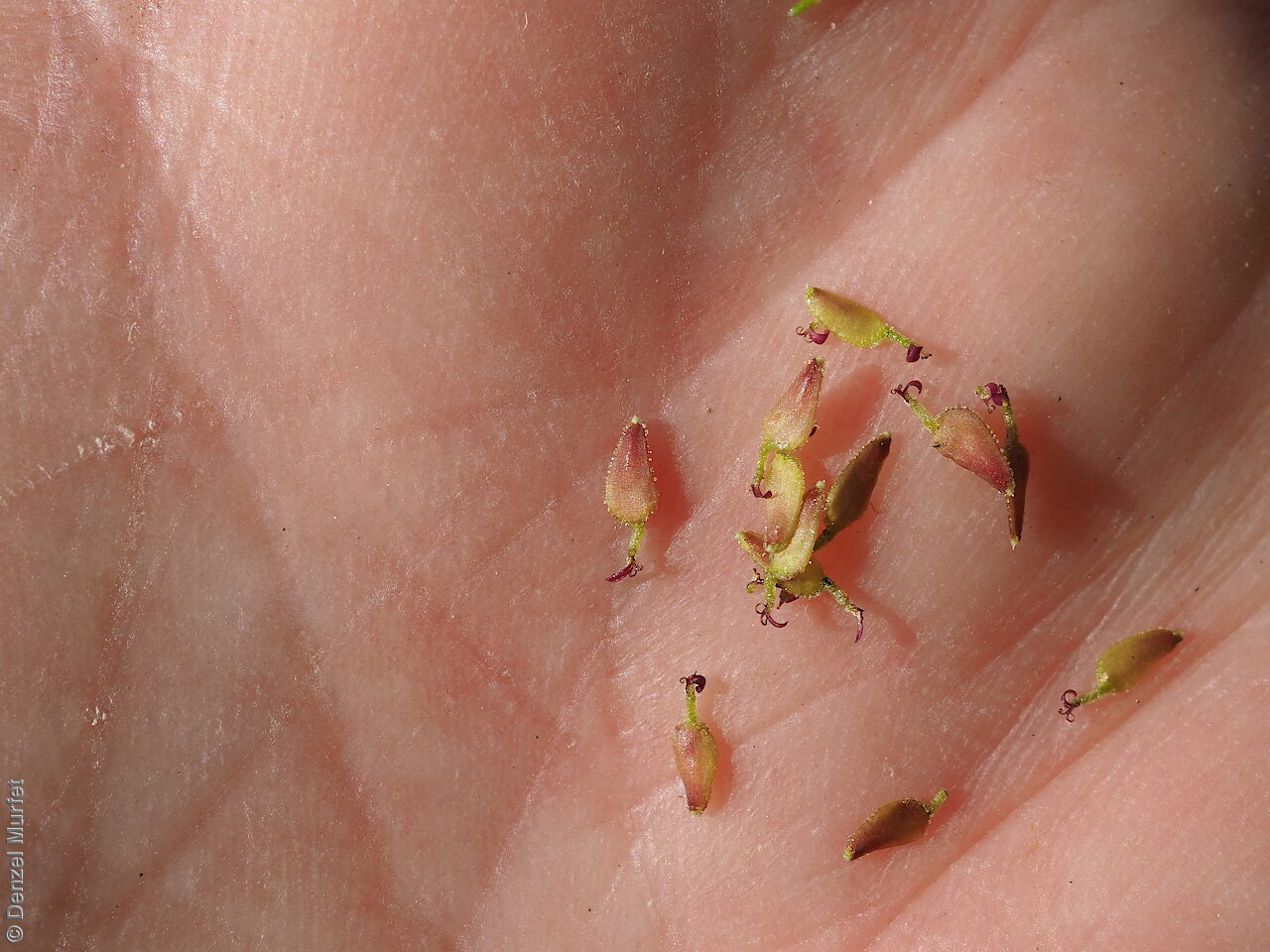
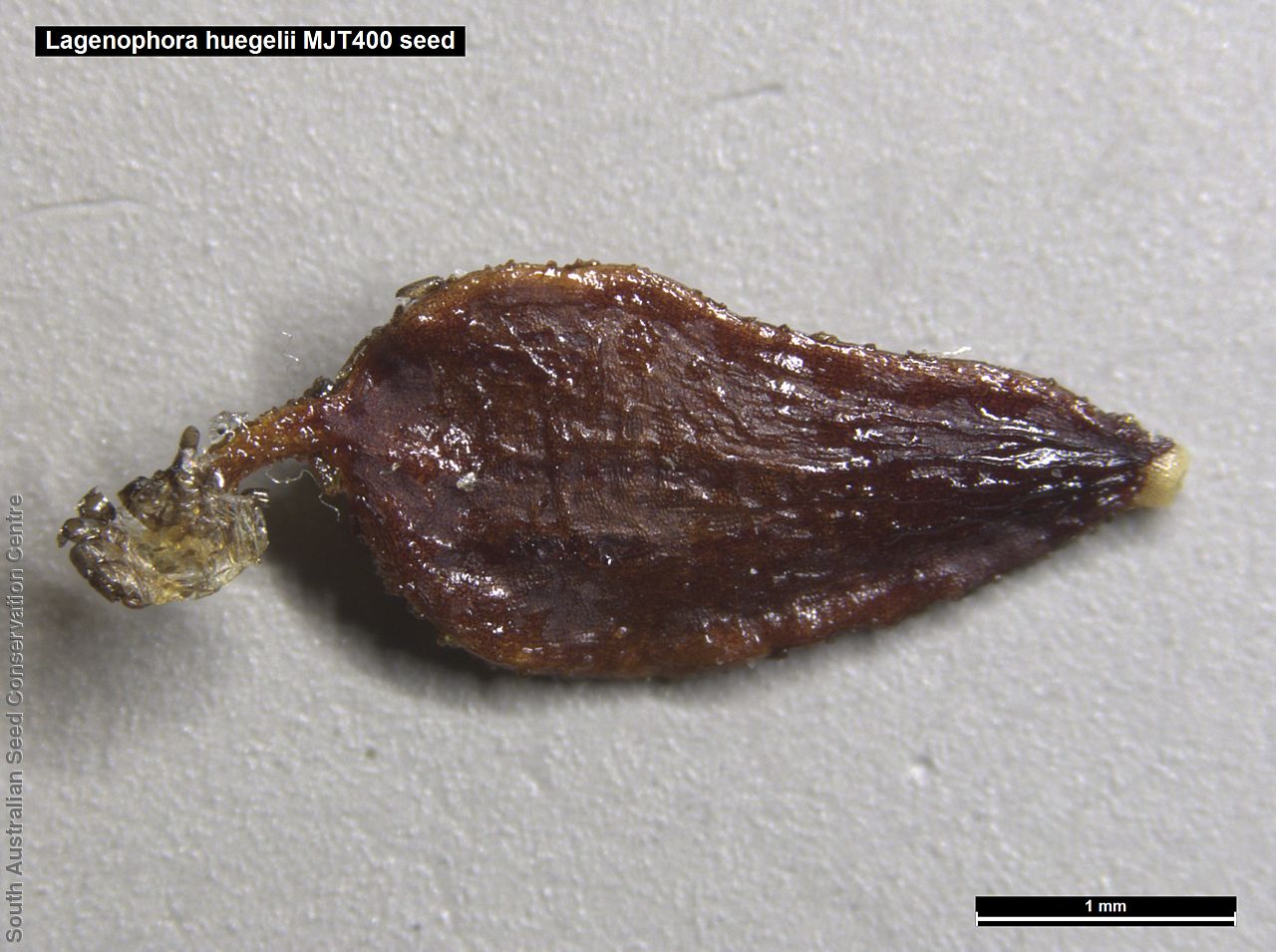
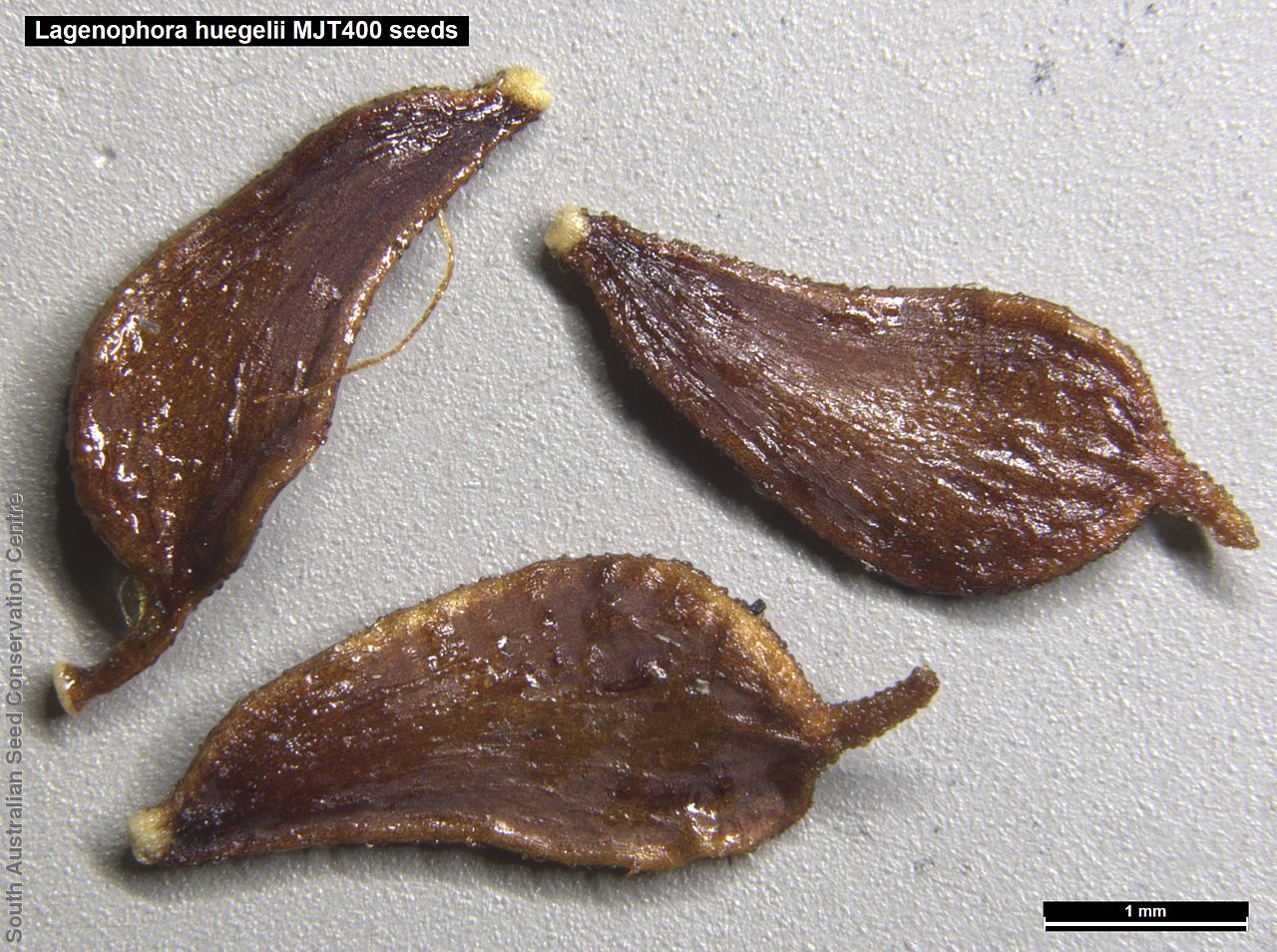
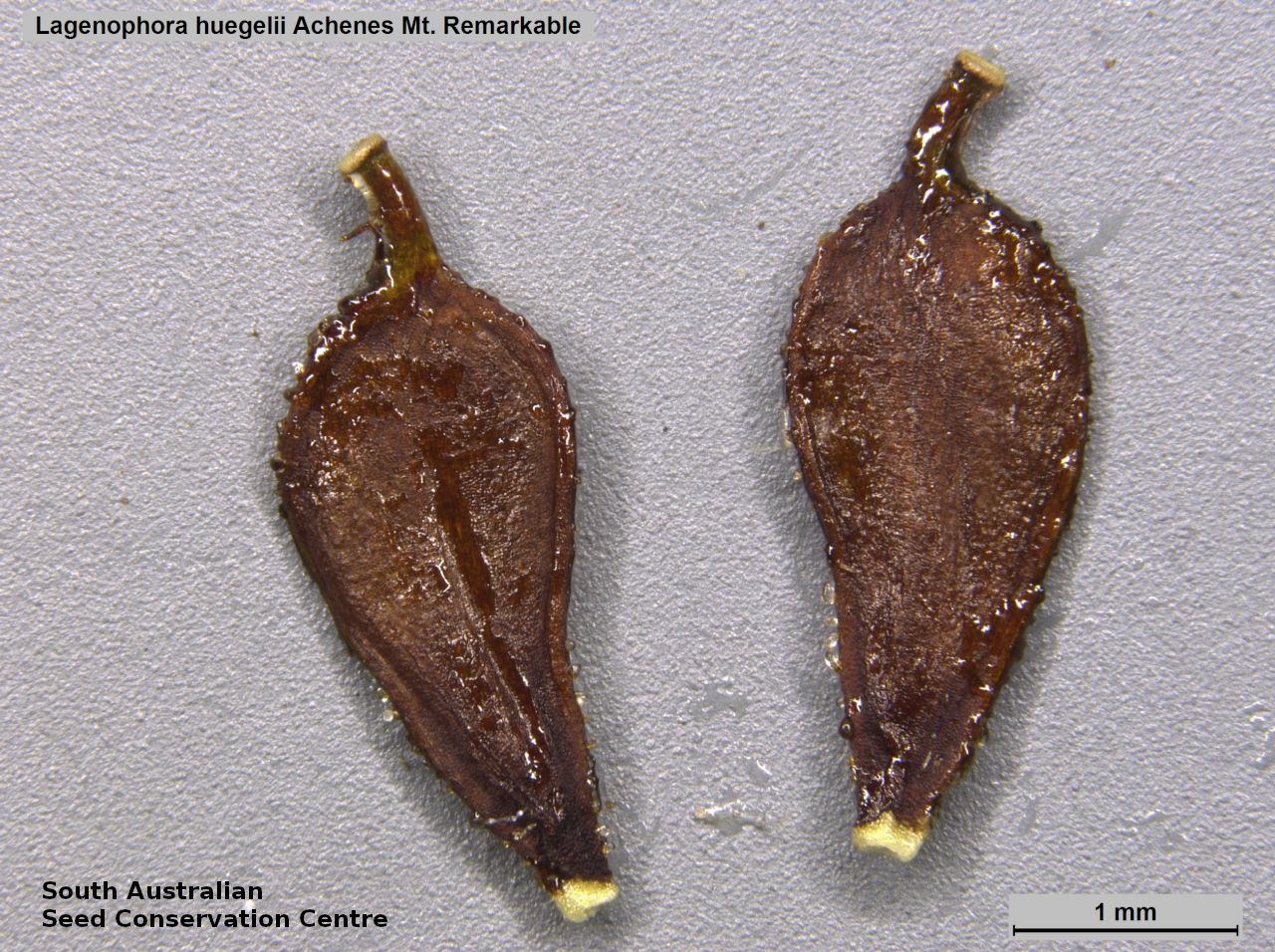

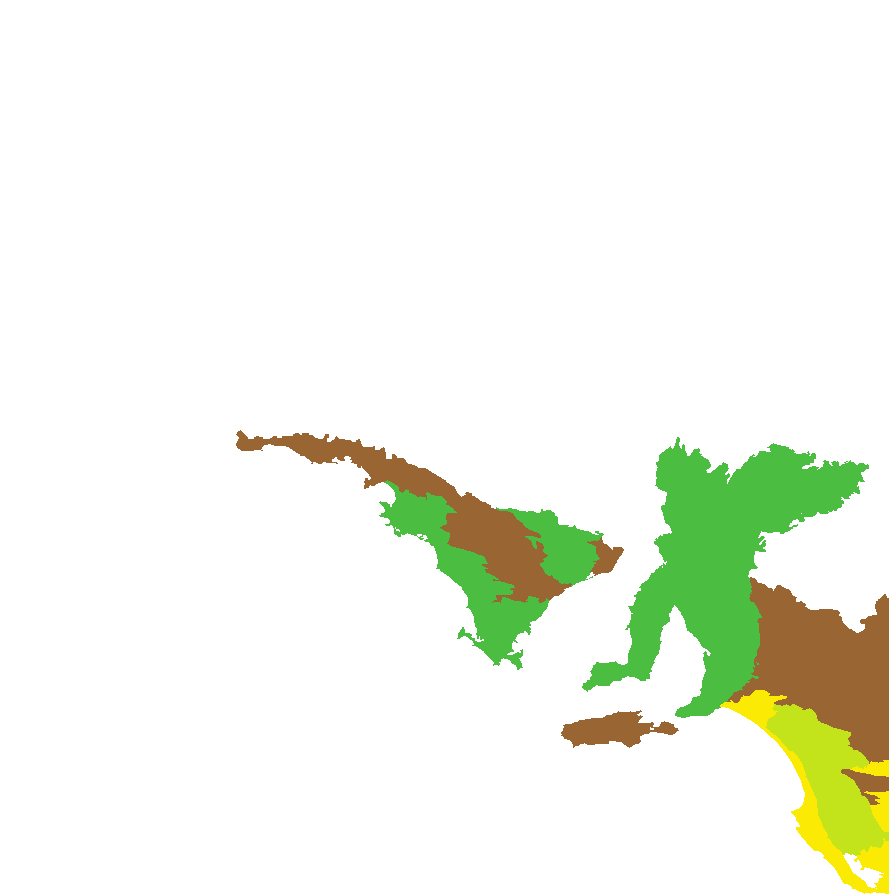
Botanical art
Prior names
Lagenophora huegelii
Lagenifera huegelii
Common names
Coarse Bottle-daisy
Coarse Lagenifera
Etymology
Lagenophora, from the Greek 'lagenos', meaning flask and 'phorus', suffix meaning carries, possibly referring to the urn-shaped cypsela.
Distribution and status
Found in the southern part of South Australia, growing in scrub, woodland and forest, mainly in moist gullies and near water. Also found in Western Australia, Victoria and Tasmania. Native. Common in South Australia. Common in the other States.
Herbarium regions: Flinders Ranges, Eyre Peninsula, Northern Lofty, Murray, Yorke Peninsula, Southern Lofty, Kangaroo Island, South Eastern, Green Adelaide
NRM regions: Adelaide and Mount Lofty Ranges, Eyre Peninsula, Kangaroo Island, Northern and Yorke, South Australian Arid Lands, South Australian Murray-Darling Basin, South East
AVH map: SA distribution map (external link)
Plant description
Herb with short rhizome short and fleshy roots. Basal leaves oblanceolate, to 110 mm long and 28 mm wide; shallowly dentate or serrate with 4-10 pairs of teeth; densely hairy. Flower-heads solitary on a long hairy stalk with white to pink or mauve or purplish daisy-flower. Flowering mainly in spring. Fruits are brown head with exposed seeds. Seeds are semi-flat dark brown, ovoid seed to 3 mm long and 1.5 mm wide. Seed embryo type is spathulate.
Seed collection and propagation
Collect seeds between November and January. Pick heads that are maturing; drying off, with exposed brown seeds. Mature seeds should come-off easily. Place the heads in a tray and leave to dry for a week. Then gently rub the heads by hand to dislodge the seeds. Use a sieve to separate the unwanted material. Store the seeds with a desiccant such as dried silica beads or dry rice, in an air tight container in a cool and dry place.
| Location | No. of seeds (weight grams) | Number of plants | Date collected | Collection number Collection location | Date stored | % Viability | Storage temperature |
|---|---|---|---|---|---|---|---|
| BGA MSB | 7,800 (8.35 g) 7,800 (8.35 g) | 100+ | 22-Oct-2005 | DJD151 Southern Lofty | 14-Sep-2006 | 95% | -18°C |
Number of plants: This is the number of plants from which the seeds were collected.
Collection location: The Herbarium of South Australia's region name.
% Viability: Percentage of filled healthy seeds determined by a cut test or x-ray.